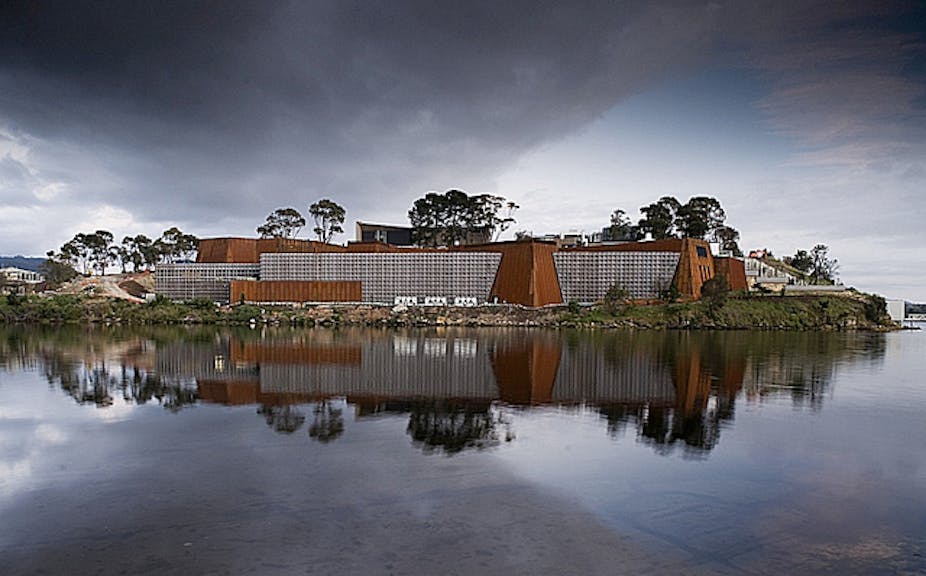Only a quarter of a century ago, art museums in Australia were generally thought of as stately enterprises authoritatively disseminating knowledge of high culture to respectful devotees.
That was reflected in museum architecture: think grand flights of steps, columns, and porticos giving way to atriums and vast foyers, often leading to a spare white cube interior.

But the face of the museum has undergone a significant makeover in the last few decades.
With costs escalating and funding scarcer than ever, art museums are realising an interesting building can draw a crowd as well as any blockbuster exhibition.
Witness the rise of spectacular art museum architecture, often by brand-name architects. The game-changer in this respect was the Guggenheim Museum Bilbao, in Northern Spain, created by Canadian-American architectural superstar, Frank Gehry and Thomas Krens, then-director of the Guggenheim Museum New York, who worked with the Basque government on the project.
Though built 16 years ago, opinion is still divided on the appropriateness of the shimmering and dynamic curves of its titanium exterior, soaring atrium and vastly scaled interior spaces.

Regardless of one’s opinion, Gehry’s radical revisioning of art museum architecture provided an instant and iconic catalyst for global museum investment and development.
Museum administrators, city planners and governments soon saw the potential for a unique building design – on top of the exhibits indoors – to draw crowds, fuel cultural tourism and revitalise local economies.
In Australia, two recent exceptional examples of the remarkable success of this approach to museum performance are the Museum of Old and New Art (MONA) in Tasmania and the Gallery of Modern Art (GoMA) in Brisbane.
In the case of MONA, the originality of the programming, coupled with a sense of civic pride and celebration of architectural space, have helped to transform Hobart into Tasmania’s – if not Australia’s – key destination for contemporary art.
GoMA, likewise, has built an extraordinary reputation for reaching out to the region, and reconfiguring Australia’s relationship with others and to itself, in particular through its exhibitions dealing with Aboriginal art and the substantial accomplishment of the Asia Pacific Triennial.

There appears to be no abatement in the production line of glamorous new contemporary art museums, from Beijing’s National Art Museum of China (designed by France’s Jean Nouvel) to the planned Guggenheim Abu Dhabi, designed by Frank Gehry.
New museums, often of mammoth proportions, are being developed to serve the future needs of international audiences with international expectations.
The Art Gallery of NSW’s recently announced strategic vision and masterplan called Sydney Modern, which promises to radically expand and transform exhibition spaces and digital technology to better engage physical and virtual audiences of the 21st century, joins the queue of massive museum redevelopments in planning.
Regional centres (such as Beijing) are getting richer, but may still lack substantial, iconic art collections such as those in New York City, London or Paris.
These regional, aspirational cities, with thriving economies and transnational populations, are locking onto the contemporary as a means of establishing their bona fide cultural credentials and shoring up their economic futures.
Interesting and unique art museum design is emerging as a way for local economies to do just that: provide an extra draw card for tourists seeking more than just another good exhibition.
These themes and more will be discussed at a symposium titled Inside Out: The Dynamics of New Museum Architecture on Display, which runs from November 19 to November 20 at COFA, Paddington, Sydney.

